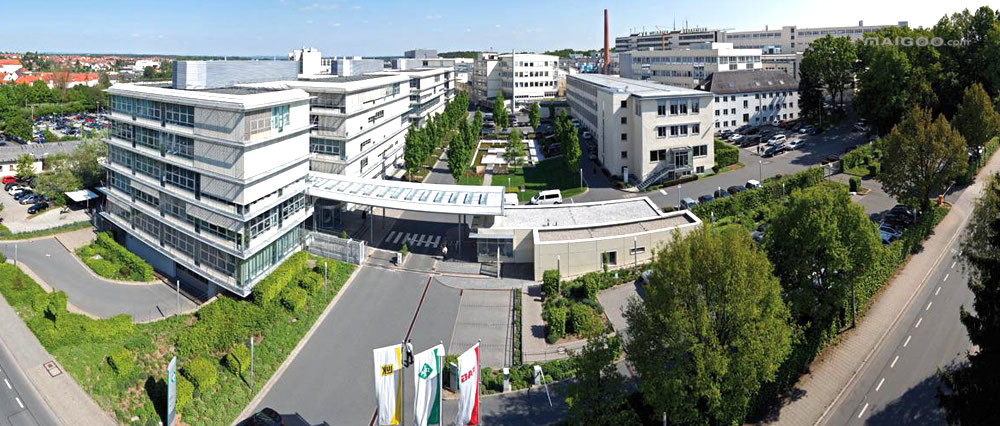At the Tokyo Motor Show 2017 in Japan, Schaeffler is presenting solutions for a carbon-neutral mobility of the future, taking the entire energy chain into consideration
From optimizing internal combustion engines to hybridization and electric mobility: Products and systems for the mobility requirements of Japanese and South-East Asian markets are being presented
Focus on electric mobility: Test drives with innovative 48-volt hybrid concept vehicles offer great potential

There is no single solution for the mobility of tomorrow. Schaeffler is making a point of this at the Tokyo Motor Show. Looking at local vehicle emissions is not enough. The mobility of tomorrow can only be sustainable when the entire energy chain is considered: Starting from the generation of energy to its conversion and storage and technical solutions for all different types of powertrains. Experts refer to the “well-to-wheel” method. Schaeffler has recognized this and offers solutions to further increase the efficiency of conventional internal combustion engines and technologies for hybrid and purely electrical drives. Electric mobility plays an important and forward-looking role in combining these technologies. “In Schaeffler’s view, electric vehicles can essentially meet people’s needs for personal mobility in urban areas,” says Prof. Peter Pleus, Schaeffler’s CEO Automotive. “However, not only the powertrain concept of a vehicle is of crucial importance. Equally important is the way in which the energy needed for mobility is generated and stored.” Schaeffler is offering a broad range of products and solutions for generating energy from renewable sources and is making an equally important contribution to sustainably shaping mobility for tomorrow (well-to-wheel).
48-Volt-Hybrid-Concepts
Schaeffler is presenting advanced 48-volt hybrid concept vehicles and other solutions for the region at the Tokyo Motor Show 2017. The company develops a wide variety of systems and components for the various requirements in the different regions. In addition to further optimizing the conventional internal combustion engine and associated transmissions, Schaeffler engineers are working on solutions for the electrification of the powertrain, the optimally coordinated interaction of the internal combustion engine and the electric motor for hybrid vehicles, and on tailor-made, efficient electric drive systems for electric vehicles.
“The internal combustion engine will continue to be an important element in transporting people and goods,” Shinzo Yotsumoto, Managing Director, Representative Director & President of Automotive in Schaeffler Japan emphasizes. “This not only refers to passenger cars but, above all, to commercial vehicles, ships and aircraft for which no serious battery-electric alternative will be available in the foreseeable future.”
Test driving events demonstrate 48-Volt-Concept Cars
Schaeffler demonstrated in Japan prior to the Tokyo Motor Show a range of hybrid modular concept vehicles in test driving events for Japanese customers such as the “Gasoline Technology Car” (GTC), using a 48-volt hybrid module and manual transmissions. “The GTC concept is especially suitable for affordable electrification of small compact cars widely used in Japan and in South-East-Asia” explains Andreas Schick, Regional Chief Executive Officer of Schaeffler in Asia Pacific.
The “Schaeffler High Performance 48 Volt” concept vehicle, which was also introduced during the customer presentations in Japan, is a demonstration of what is possible with 48-volt systems. The vehicle is based on an Audi TT and is equipped with a 48-volt belt-driven starter generator combined with a 48-volt electric axle. The integrated drive in this P4 arrangement provides 20 kW of permanent, purely electric power. “With this concept car, we want to explore almost unlimited innovation potentials of the 48-volt technology” says Andreas Schick. Not only is purely electric driving possible in urban areas at low speeds, but also using the torque vectoring function at any speed, which enables selective distribution of drive torque, for example. This increases dynamics and driving safety, offering a compelling solution for the medium size SUV segment.
Deepening partnership with customers
Schaeffler’s booth at the Tokyo Motor Show demonstrates products and systems that meet the specific requirements of our customers in Japan. One example is the continuous electric mechanical ride height adjustment system, which has been developed according to chassis specifications of one of our JOEM customers. The vehicle can be adjusted to a lower position in order to reduce air resistance which reduces the fuel consumption on highways. On the contrary, at higher position the off-road capabilities can be improved. With projects like this Schaeffler ist deepening the partnership with customers.

 Industry News
Industry News